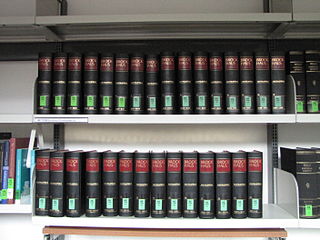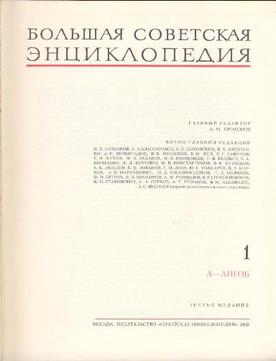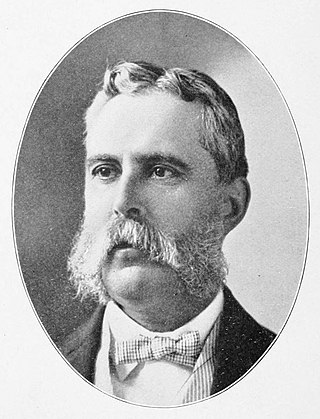Related Research Articles

Alexander Anderson was a Scottish mathematician.

A reference work is a work, such as a paper, book or periodical, to which one can refer for information. The information is intended to be found quickly when needed. Such works are usually referred to for particular pieces of information, rather than read beginning to end. The writing style used in these works is informative; the authors avoid use of the first person, and emphasize facts.

The Dictionary of National Biography (DNB) is a standard work of reference on notable figures from British history, published since 1885. The updated Oxford Dictionary of National Biography (ODNB) was published on 23 September 2004 in 60 volumes and online, with 50,113 biographical articles covering 54,922 lives.

John Nichols was an English printer, author and antiquary. He is remembered as an influential editor of the Gentleman's Magazine for nearly 40 years; author of a monumental county history of Leicestershire; author of two compendia of biographical material relating to his literary contemporaries; and as one of the agents behind the first complete publication of Domesday Book in 1783.

The Great Soviet Encyclopedia is one of the largest Russian-language encyclopedias, published in the Soviet Union from 1926 to 1990. After 2002, the encyclopedia's data was partially included into the later Bolshaya rossiyskaya entsiklopediya in an updated and revised form. The GSE claimed to be "the first Marxist–Leninist general-purpose encyclopedia".

Appletons' Cyclopædia of American Biography is a six-volume collection of biographies of notable people involved in the history of the New World. Published between 1887 and 1889, its unsigned articles were widely accepted as authoritative for several decades. Later the encyclopedia became notorious for including dozens of biographies of people who had never existed. In nearly all articles about the Cyclopædia various authors have erroneously spelled the title as 'Appleton's Cyclopædia of American Biography', placing the apostrophe in the wrong place.

Cyclopædia: or, An Universal Dictionary of Arts and Sciences is an encyclopedia prepared by Ephraim Chambers and first published in 1728; six more editions appeared between 1728 and 1751 with a Supplement in 1753. The Cyclopædia was one of the first general encyclopedias to be produced in English.

Rees's Cyclopædia, in full The Cyclopædia; or, Universal Dictionary of Arts, Sciences, and Literature was an important 19th-century British encyclopaedia edited by Rev. Abraham Rees (1743–1825), a Presbyterian minister and scholar who had edited previous editions of Chambers's Cyclopædia.

Lives of the Most Eminent English Poets (1779–81), alternatively known by the shorter title Lives of the Poets, is a work by Samuel Johnson comprising short biographies and critical appraisals of 52 poets, most of whom lived during the eighteenth century. These were arranged, approximately, by date of death.

John Howie was a Scottish biographer. His best known work was Biographia Scoticana, first published in 1775, which is often called The Scots Worthies. It deals with Christians and particularly Presbyterians especially in their strivings with church and civil authorities.

A General History of the Robberies and Murders of the most notorious Pyrates is a 1724 book published in Britain containing biographies of contemporary pirates, which was influential in shaping popular conceptions of pirates. Its author uses the name Captain Charles Johnson, generally considered a pen name for one of London's writer-publishers. The prime source for the biographies of many well-known pirates, the book gives an almost mythical status to the more colourful characters, and it is likely that the author used considerable licence in his accounts of pirate conversations. The book also contains the name of the pirate flag the Jolly Roger and shows the skull and bones design.
Nathanael Carpenter was an English author, philosopher, and geographer.

The Scots Peerage is a nine-volume book series of the Scottish nobility compiled and edited by Sir James Balfour Paul, published in Edinburgh from 1904 to 1914. The full title is The Scots Peerage: Founded on Wood's Edition of Sir Robert Douglas's Peerage of Scotland, containing an Historical and Genealogical Account of the Nobility of that Kingdom.
Baker's Biographical Dictionary of Musicians is a major reference work in the field of music, originally compiled by Theodore Baker, PhD, and published in 1900 by G. Schirmer, Inc. The ninth edition, the most recent edition, was published in 2001 — one hundred and one years after the first edition.
John Platts (1775–1837) was an English Unitarian minister and author, a compiler of reference works.

The General Biographical Dictionary was a book written by American clergyman John Lauris Blake. The book's full title was A General Biographical Dictionary, Comprising a Summary Account of the Most Distinguished Persons of All Ages, Nations and Professions, including more than one thousand articles of American Biography.

James Terry White was an American publisher and poet. Given his wide range of interests and involvement in various businesses and cultural activities, he was reputed to be a Renaissance man. In 1862, he joined the San Francisco publishing firm H.H. Bancroft & Co. In 1869, White founded a publishing company bearing his name, James T. White Co. in San Francisco; and in 1886, with his son George Derby White, moved its headquarters to New York City. The firm published the first edition of The National Cyclopaedia of American Biography in 1891. At the death of his son in 1939, thirty-one volumes had been published, each containing about 1,000 biographies and 450 pages.

Franciscus à Mesgnien Meninski (1623–1698) was the author of a multi-volume Turkish-to-Latin dictionary and grammar of the Turkish language, first published in 1680, which was ground-breaking in its comprehensiveness at the time, and for historians and linguists today it is a valuable reference for the Turkish language of the early modern period.

Harris' Minor Encyclopedia is a small encyclopedia compiled by the Rev. Thaddeus Mason Harris in 1803 in Dorchester, Massachusetts, and published that year in Boston by West and Greenleaf. The full title on the title page is The Minor Encyclopedia, or Cabinet of General Knowledge: Being a Dictionary of Arts, Sciences and Polite Literature. In Four Volumes.

Elizabeth Wooster Stuart Phelps (1815–1852) was an American writer of religiously themed articles, adult domestic fiction and books for children. She wrote eleven books as well as numerous articles and stories that were translated and published in many languages, and probably many more works that appeared anonymously. Phelps wrote "at the beginning of the transition in American women's writing from domestic sentimentality to regional realism" and was "among the earliest depicters of the New England scene, antedating the regional novels of her Andover neighbor, Harriet Beecher Stowe". In addition to being one of the earliest known authors to have penned a fiction series specifically for girls, her writing also focused on the burdens on women in their restrictive roles as mothers and wives. Her much anthologized 1852 semi-autobiographical short story, "The Angel Over the Right Shoulder", illustrates the repressive burdens frustrating a wife's creative ambitions and need to "cultivate her own mind and heart". The story is notable as "one of the rare woman's fictions of this time to recognize the phenomenon of domestic schizophrenia", says literary critic Nina Baym.
References
- Knapp. Female Biography. 1834. p 502.
- The Penny Cyclopedia of the Society for the Diffusion of Useful Knowledge. London: Charles Knight. 1835. Volume 4. Page 416.
- Wheatly. How to Form a Library. CUP. p 94.
- ↑ Cooper, Thompson (1887). . In Stephen, Leslie (ed.). Dictionary of National Biography . Vol. 9. London: Smith, Elder & Co.